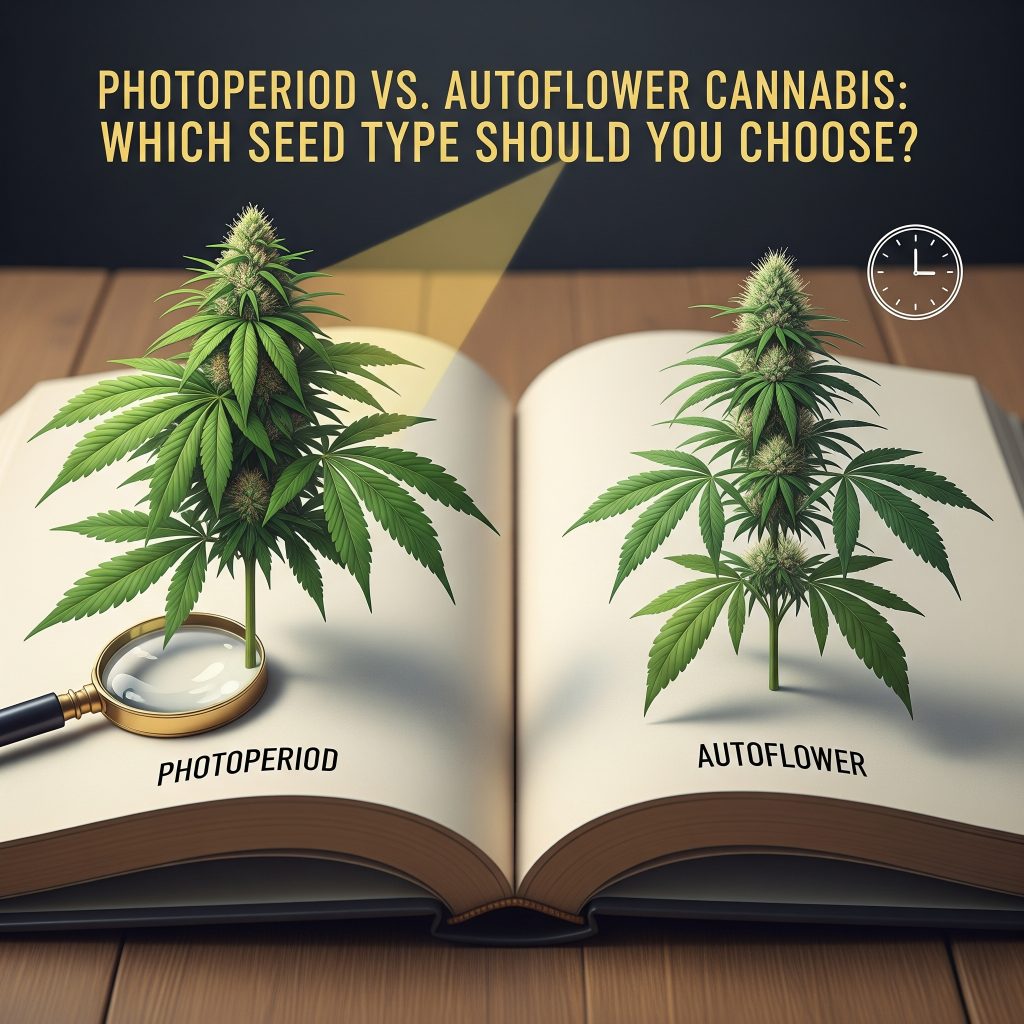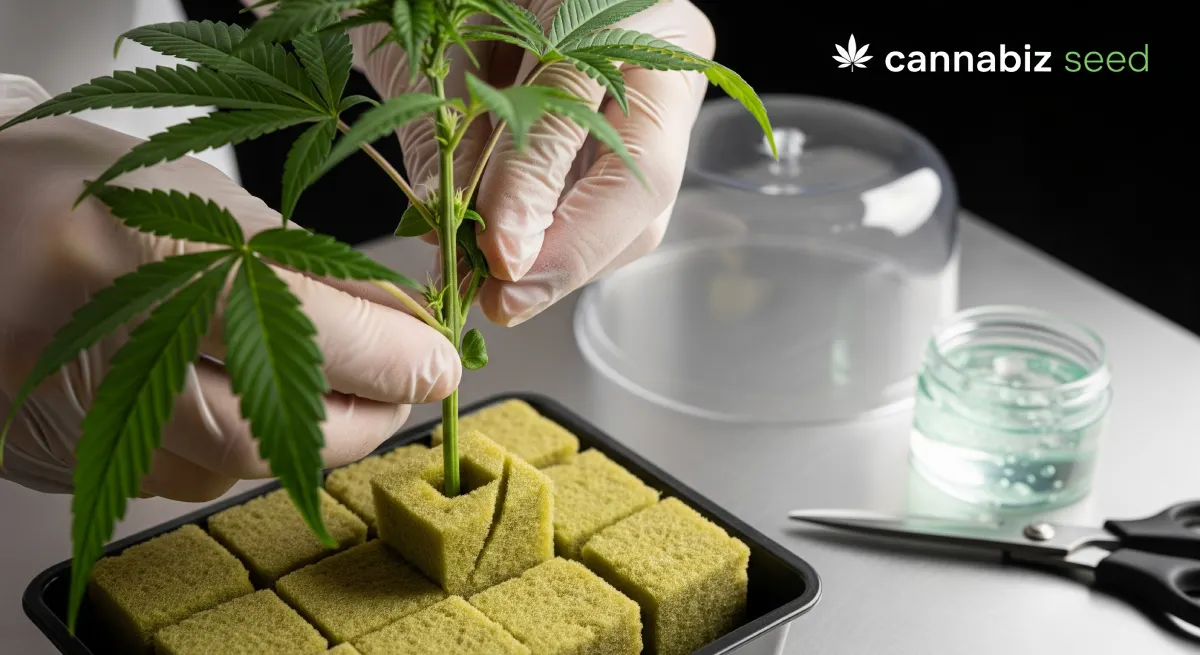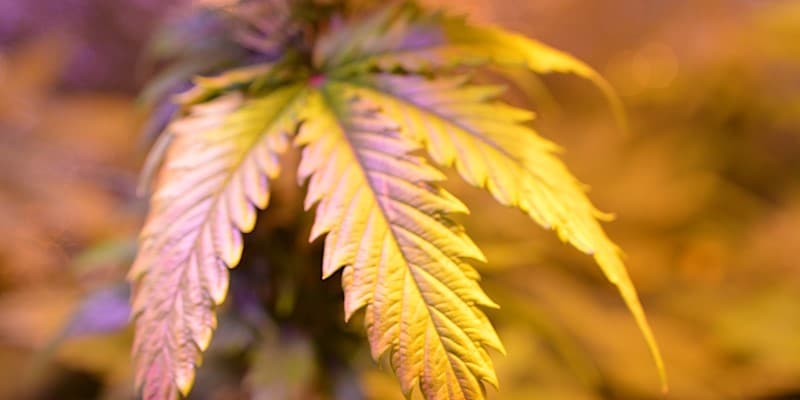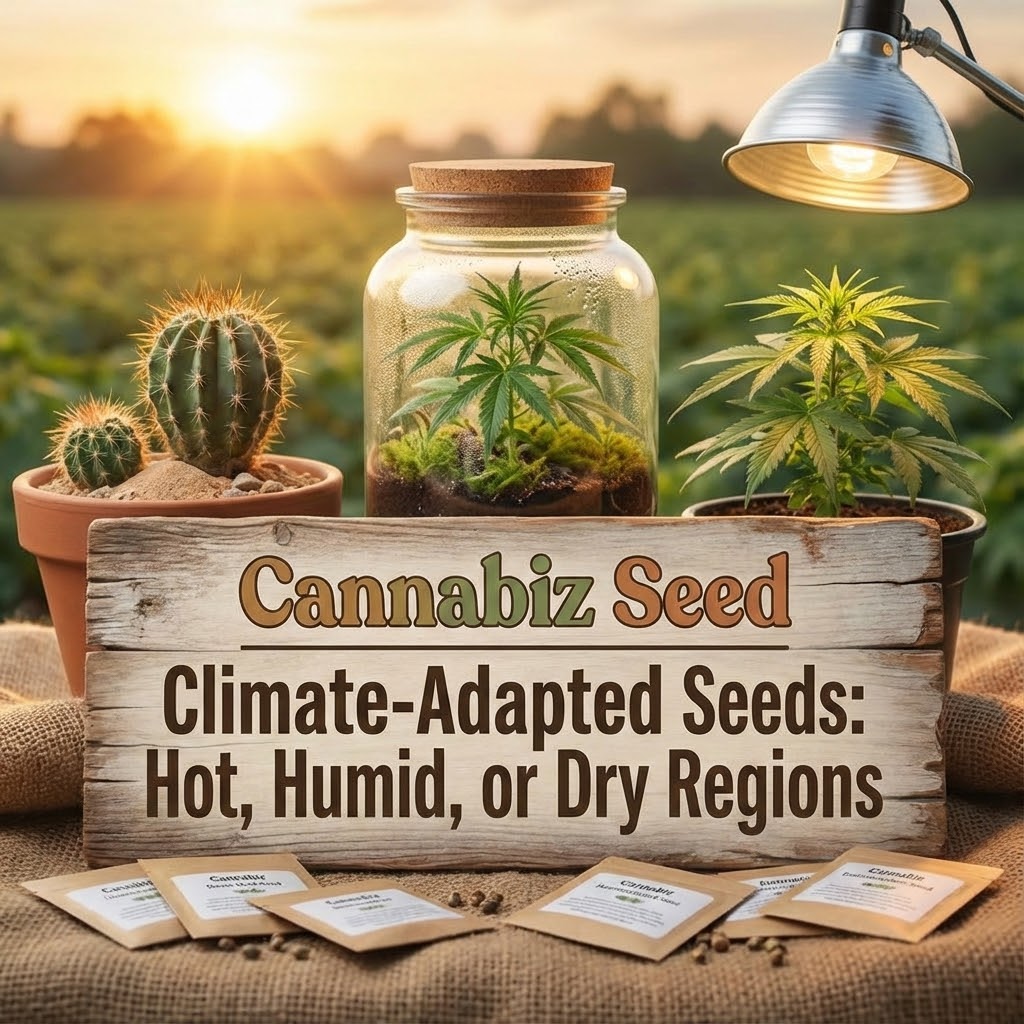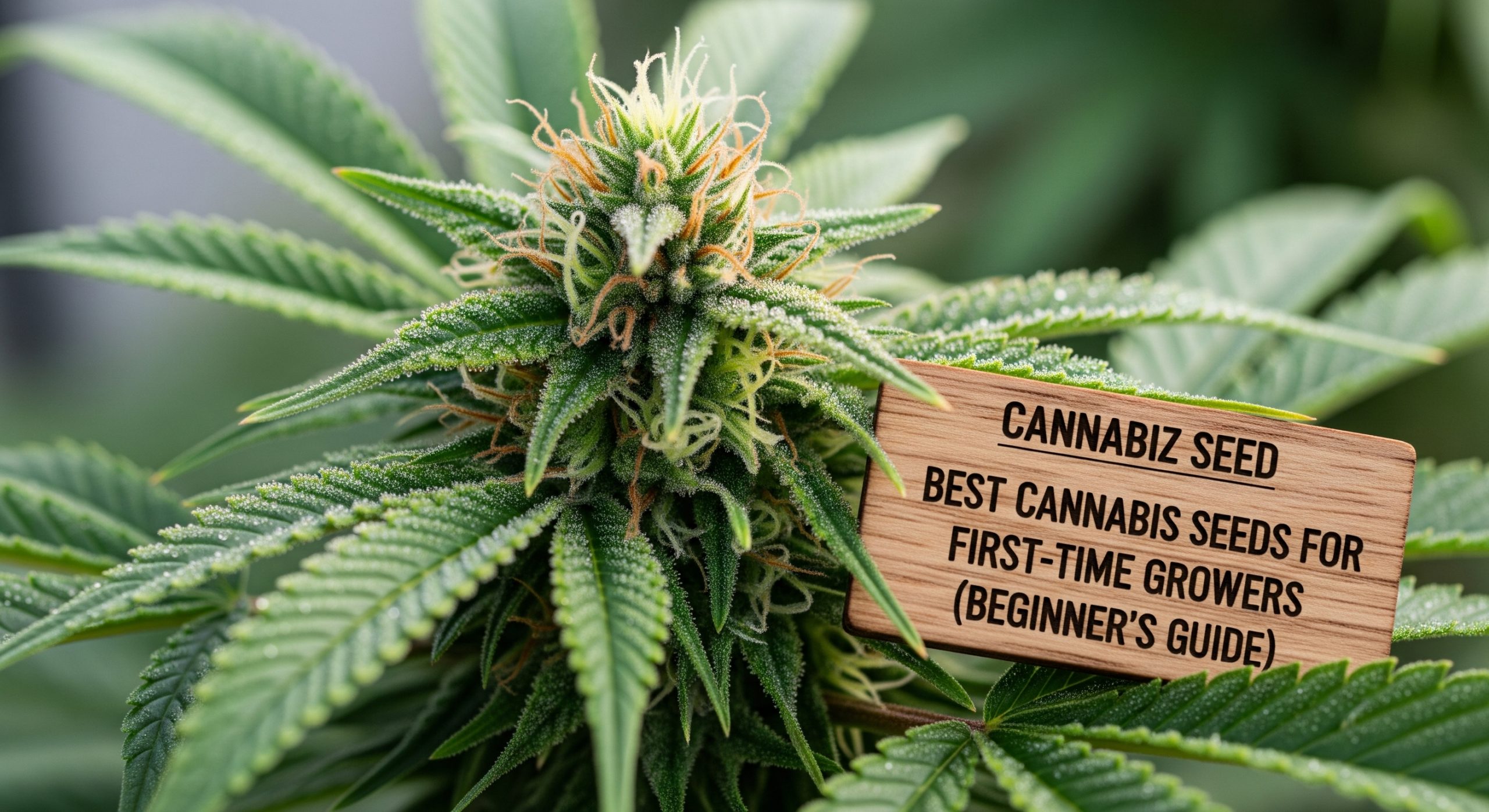Photoperiode vs. Autoflower Cannabis: Welchen Saatguttyp sollten Sie wählen?
Die Cannabisgenetik bietet eine breite Palette von Merkmalsvariationen. Unter ihnen ragt das Blühverhalten heraus. Dieser Artikel befasst sich mit dem Unterschied zwischen autoflowering und photoperiodischen Cannabissamen. Wir werden auch untersuchen, wie sich diese beiden Arten von Cannabissamen auf Ihren Anbau auswirken und wie Sie die für Sie am besten geeignete auswählen.
Lassen Sie uns gleich eintauchen.
Photoperiode Cannabis
Zunächst wurden Cannabispflanzen entweder als Sativa oder Indica kategorisiert. Diese beiden Gruppen entstanden durch ihre genetischen Anpassungen an ihre ursprünglichen Anbaugebiete. Sie hatten jedoch alle ein gemeinsames Merkmal: den Zeitpunkt der Blüte.
Bei beiden Arten vollzog sich die Umstellung der Pflanzen mit dem Einsetzen des Herbstes, der durch die kürzeren Sonnenstunden gekennzeichnet ist. Diese kürzeren Tage dienten als Auslöser und signalisierten ihnen, dass es an der Zeit war, das Wachstum zu stoppen und mit der Blüte zu beginnen, damit sie diese beenden konnten, bevor der Winter sie hart traf.
Dieses Merkmal kennzeichnet die photoperiodischen Cannabispflanzen. Die Anbauer entdeckten bald, dass sie sie im Innenbereich kontrollieren können. Indem sie die Dunkelstunden verlängerten, ahmten sie den Herbst nach und trieben die Pflanzen zur Blüte.
Autoflower Cannabis
Hier kommt Cannabis ruderalis ins Spiel, eine neue Cannabisart , die erstmals 1924 von D. E. Janischewsky wissenschaftlich beschrieben wurde. Der russische Botaniker beobachtete eine Population wild wachsender Cannabispflanzen , die sich deutlich von den bekannteren Cannabis sativa und Cannabis indica unterschieden .
Ruderalis-Pflanzen entwickelten sich in den strengen Winterregionen Mittel- und Osteuropas und Russlands. Anstatt sich auf die jahreszeitlichen Lichtveränderungen zu verlassen, lernten sie, nach dem Alter zu blühen, um sich an die kurzen Sommer anzupassen , die zu kurzen Wachstumsperioden führten.
Die Entdeckung der Ruderalis hatte zunächst wenig Einfluss auf die Cannabiswelt. Die meisten Enthusiasten taten sie als eine Art von minderwertigem Hanf ab , da ihre Knospen winzig waren, eine geringe Potenz aufwiesen und ihr Geruch nur schwer zu ertragen war.
Erst als Züchter begannen, Ruderalis mit photoperiodischen Sorten zu kreuzen, entstanden die modernen autoflowering Cannabissamen . Diese Sorten kombinieren die Potenz von Photoperioden mit den autoflowering Fähigkeiten von Ruderalis.
Wie man die beiden voneinander unterscheidet - und warum das wichtig ist
Wie wir bereits gesehen haben, liegtder Hauptunterschied zwischen Autoflower- und photoperiodischen Samen in ihrem Blühverhalten. Aber dieses eine Detail verursacht einen Welleneffekt, der sich auf jeden Teil Deines Anbaus auswirkt.
1. Blütezeit und Erntezeiträume
Die durchschnittliche Zeitspanne von der Saat bis zur Ernte einer Autoflower liegt zwischen 8 und 10 Wochen. Es gibt kein Warten auf Signale oder saisonale Hinweise, denn sobald die Pflanze ihre Reife erreicht hat, tritt sie in die Knospungsphase ein.
Die Blütezeit von Cannabis hängt hingegen von Ihnen ab. In Innenräumen müssen Sie den Lichtzyklus von 18/6 auf 12/12 umstellen , um sie auszulösen. Im Freien wartet sie bis zum Herbst, wenn die Tage kürzer und die dunklen Stunden länger werden. Die Blüte allein kann 8-12 Wochen dauern, zusätzlich zur vegetativen Phase.
Wachsen Autoflower-Sorten schneller als Photoperioden-Sorten? Nun, der Wachstumszyklus der Autoflower-Cannabissorten gewinnt. Wenn Du jedoch mehr Kontrolle über den Zeitpunkt und die Art und Weise des Übergangs Deiner Pflanze haben möchtest, bieten Dir photoperiodische Cannabissamen diese Möglichkeit.
2. Drinnen vs. Draußen
Photoperiodische Cannabispflanzen für den Außenbereich sind in Regionen mit deutlichen saisonalenLichtveränderungen am besten geeignet. Denken Sie an südliche Klimazonen mit langen Sommern und definierten Herbsten. Aber sie erfordern Engagement - die Pflanzen können riesig werden und die Ernten können sich bis in den Spätherbst erstrecken.
Autoflowering-Hanfsamen sind jedoch ideal für kurze Wachstumsperioden. Sie blühen, egal was passiert. Das macht sie geeignet für nördliche Züchter oder diejenigen, die mehrere Outdoor-Ernten pro Jahr wünschen .
Wollen Sie drinnen anbauen? Beide Arten können funktionieren, aber Autoflower erfordern weniger Anpassungen. Du kannst sogar Autoflower und photoperiodische Pflanzen im selben Zelt anbauen. Seien Sie einfach clever mit Ihren Lichtplänen.
3. Wachsende Erfahrung
Autoflower vs. Photoperiode für Anfänger ist eine häufige Frage - und hier ist die Wahrheit.
Sind Sie ganz neu im Grow Room? Auto fahren.
Autos sind verzeihlich. Man muss sich nicht um Lichtzyklen kümmern, sich keine Gedanken über Lichtverluste machen und sich nicht darum sorgen, dass man sie zum richtigen Zeitpunkt umdreht. Man muss sie nur gießen, füttern und beobachten, wie sie sich entwickeln. Außerdem kann man beim Anbau von autoflowering Cannabissamen im Innenbereich selbst mit einer einfachen Einrichtung gute Ergebnisse erzielen.
Photoperioden-Cannabis erfordert etwas mehr Finesse. Du bist dafür verantwortlich, die Blüte auszulösen, das Stressniveau zu überwachen und gelegentlich Techniken zur Pflanzenerziehung anzuwenden . Wenn du praktisch veranlagt bist und den Prozess liebst, ist das eine tolle Lernkurve.
4. Wachsende Anforderungen
Photoperioden-Cannabis braucht mehr als nur Erde und Wasser. Du wirst es brauchen:
- Zeitschaltuhren für die Lichtsteuerung
- Ein Wachstumsraum, der Lichtlecks abdichtet
- Eine Einrichtung, die die Saisonalität in Innenräumen nachahmt
Ohne diese Voraussetzungen geht es nicht, denn der Stress durch längere Lichteinwirkung während der Blüte oder Lichtlecks kann bei Cannabispflanzen zu Zwitterhaftigkeit führen.
Wenn eine Pflanze "hermetisch" ist, beginnt sie, Pollen zu produzieren. Dieser Pollen kann dann die Pflanze selbst und alle anderen weiblichen Pflanzen im Grow Room bestäuben. Das Ergebnis ist eine Ernte voller Samen, was die Potenz und den Ertrag des Endprodukts drastisch reduziert.
Währenddessen kannein Lichtplan für autoflowering Cannabissamen während der gesamten Aufzucht bei 18/6 oder sogar 20/4 bleiben. Es sind keine Dunkelphasen erforderlich. Das bedeutet weniger Aufwand, vor allem, wenn man gerade erst anfängt oder mit einer einfachen Innenausstattung arbeitet.
5. Ausbeuten (Menge)
Der durchschnittliche Ertrag von photoperiodischen Cannabispflanzen ist in der Regel höher. Diese Pflanzen wachsen größer, gedeihen länger und produzieren dickere Colas. Ob drinnen oder draußen, wenn die Bedingungen stimmen, können sie Monster-Ernten liefern .
Autoflower-Cannabispflanzen sind in der Regel kleiner. Aber das machen sie durch ihre Schnelligkeit wieder wett. Man kann mehrere Ernten pro Saison anbauen. Und die moderne Genetik bringt die Erträge von Autoflower-Pflanzen näher an das Niveau der Photoperiode heran.
Während eine einzelne Photoperiode eine einzelne Autoflowering-Pflanze in einem einzigen Grow übertreffen kann, kann eine gut gepflegte Autoflowering-Pflanze mit ihr konkurrieren oder sie in Gramm pro Quadratmeter pro Jahr übertreffen.

Profi-Anbautipp: Um die Erträge zu maximieren, sollten Sie Pflanzenerziehungstechniken wie LST oder Topping anwenden, um ein gleichmäßiges Blätterdach zu schaffen. Dies maximiert die Lichtverteilung und fördert mehr Knospenstandorte.
6. Potenz der Knospe (Terpene und Cannabinoide)
Wir haben bereits gesehen, dass die autoflowering Cannabispflanzen der alten Schule einen schwachen THC-Gehalt und gedämpfte Aromen hatten. Diese Zeiten sind jedoch größtenteils vorbei. Moderne autoflowering Cannabissorten weisen heute einen THC-Gehalt von über 20 % auf und haben ein reichhaltiges Terpenprofil, das mit dem ihrer photoperiodischen Eltern mithalten kann.
Dennoch hat photoperiodisches Cannabis immer noch die Nase vorn, wenn es um erstklassige Genetik geht. Wenn Sie nach Boutique-Knospen oder seltenen Terpen-Profilen suchen, geben Ihnen Fotos aufgrund ihrer längeren Blütezeit mehr Tiefe.
Aber wenn Sie einfach nur soliden Rauch ohne Stress wollen? Autos liefern. Das gilt vor allem dann, wenn Du Qualitätsgenetik von vertrauenswürdigen Züchtern verwendest.
7. Klonen und Fortpflanzung
Wenn Sie ein Cannabis-Enthusiast sind, der es liebt, Stecklinge zu nehmen und Ihren Anbau zu wiederholen, hier ist der Clou.
Photoperiodische Cannabispflanzen können geklont werden. Das bedeutet, dass eine Mutterpflanze Dutzende von genetisch identischen Nachkommen produzieren kann. Das ist großartig für die Phäno-Jagd oder um eine perfekte Pflanze für den nächsten Anbau zu bewahren.
Kann man Samen von autoflowering Cannabis erhalten? Technisch gesehen ist es möglich, durch Züchtung Samen von autoflowering Cannabis zu erhalten. Aber das Klonen von Autoflowering-Pflanzen wird hauptsächlich als ineffektiv angesehen. Wenn ein Klon Wurzeln schlägt, blüht er bereits, was bedeutet, dass er im vegetativen Stadium nur wenig Zeit hat, um groß zu werden.
Also für die Zucht, das Klonen und die genetische Kontrolle? Die Photoperiode ist eine kluge Option.
Autoflower oder Photoperiode? So treffen Sie Ihre Wahl
Nachdem Sie nun Autoflowering und Photoperiode verglichen haben , ist es an der Zeit, eine Entscheidung zu treffen.
Wenn Sie nur wenig Platz oder eine einfache Ausrüstung haben oder eine unkomplizierte Routine wünschen, machen Ihnendie Autoflower-Samen das Leben leichter. Sie sind schnell. Sie warten nicht darauf, dass du einen Schalter umlegst. Und sie verzeihen die Fehler, die die meisten Anfänger machen.
Aber wenn Sie bereit sind für eine tiefere Kontrolle und größere Ergebnisse, sind photoperiodische Cannabissamen eine solide Investition. Sie erzielen höhere Erträge, stärkere Genetik und haben die Möglichkeit, jede Pflanze durch Techniken wie Topping und Training zu formen.
Kann man Autoflower und Photoperiode zusammen anbauen?
Es gibt keine allgemeingültige Antwort auf die Debatte zwischen Autoflowering und Photoperiode. Es geht darum, was in diesem Moment zu Ihnen passt. Noch besser ist, dass man sich nicht für immer für eine entscheiden muss.
Sie können beides in einem Zelt unter einem 18/6-Lichtplan betreiben . Lassen Sie die autoflower Hanfsamen natürlich wachsen, während Sie Ihre photoperiodischen Pflanzen im vegetativen Stadium halten. Sobald die Autopflanzen fertig sind, stellen Sie Ihre Photoperiode auf 12/12 um und lassen Sie sie blühen.
Noch ein Trick gefällig? Versetzen Sie sie. Beginnen Sie mit der Anpflanzung einer Auto-Pflanze, und wenn sie sich der Knospenbildung nähert, stellen Sie eine Photoperiode ein und mischen Sie sie. Viel Spaß beim Wachsen.
